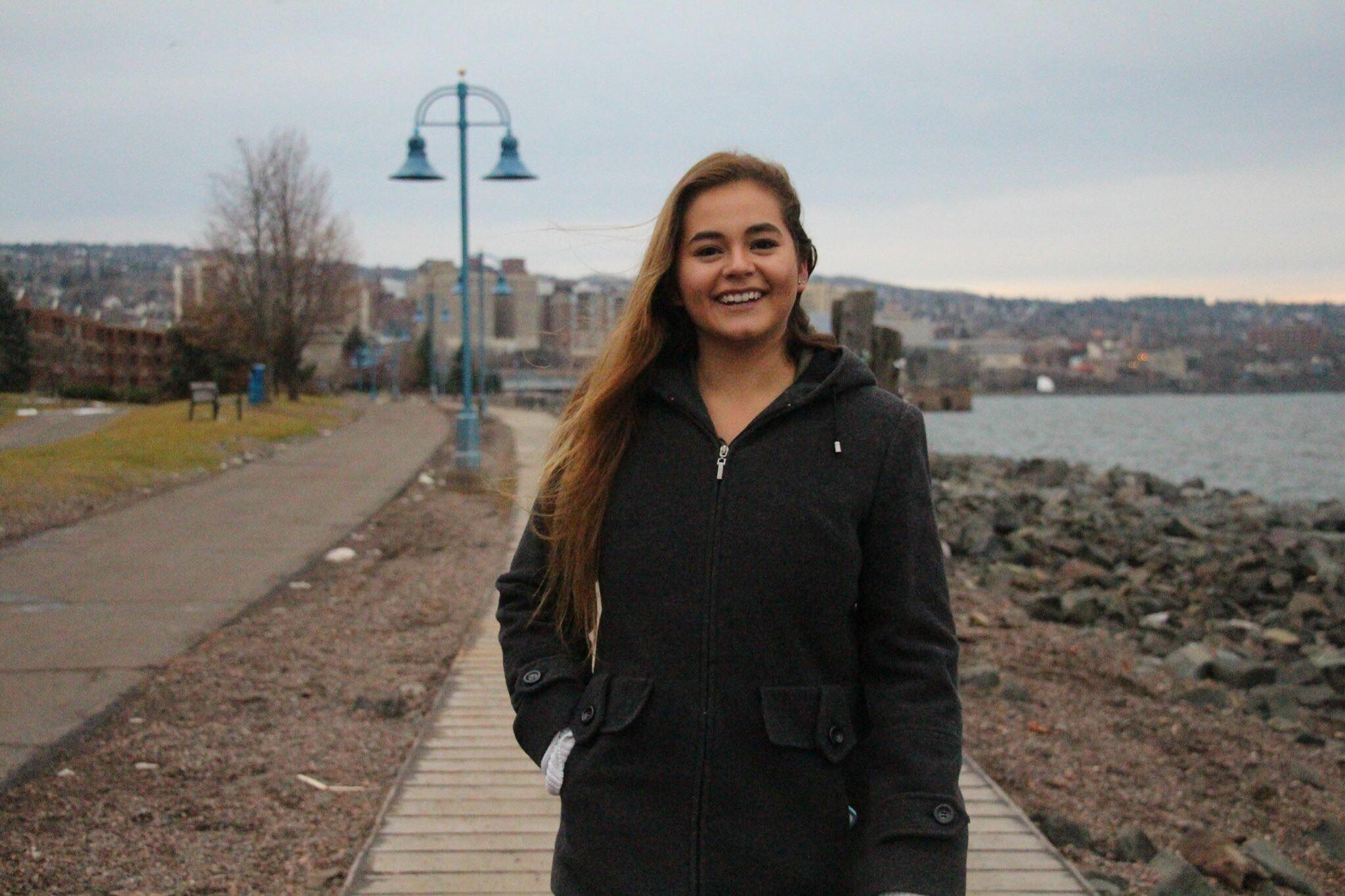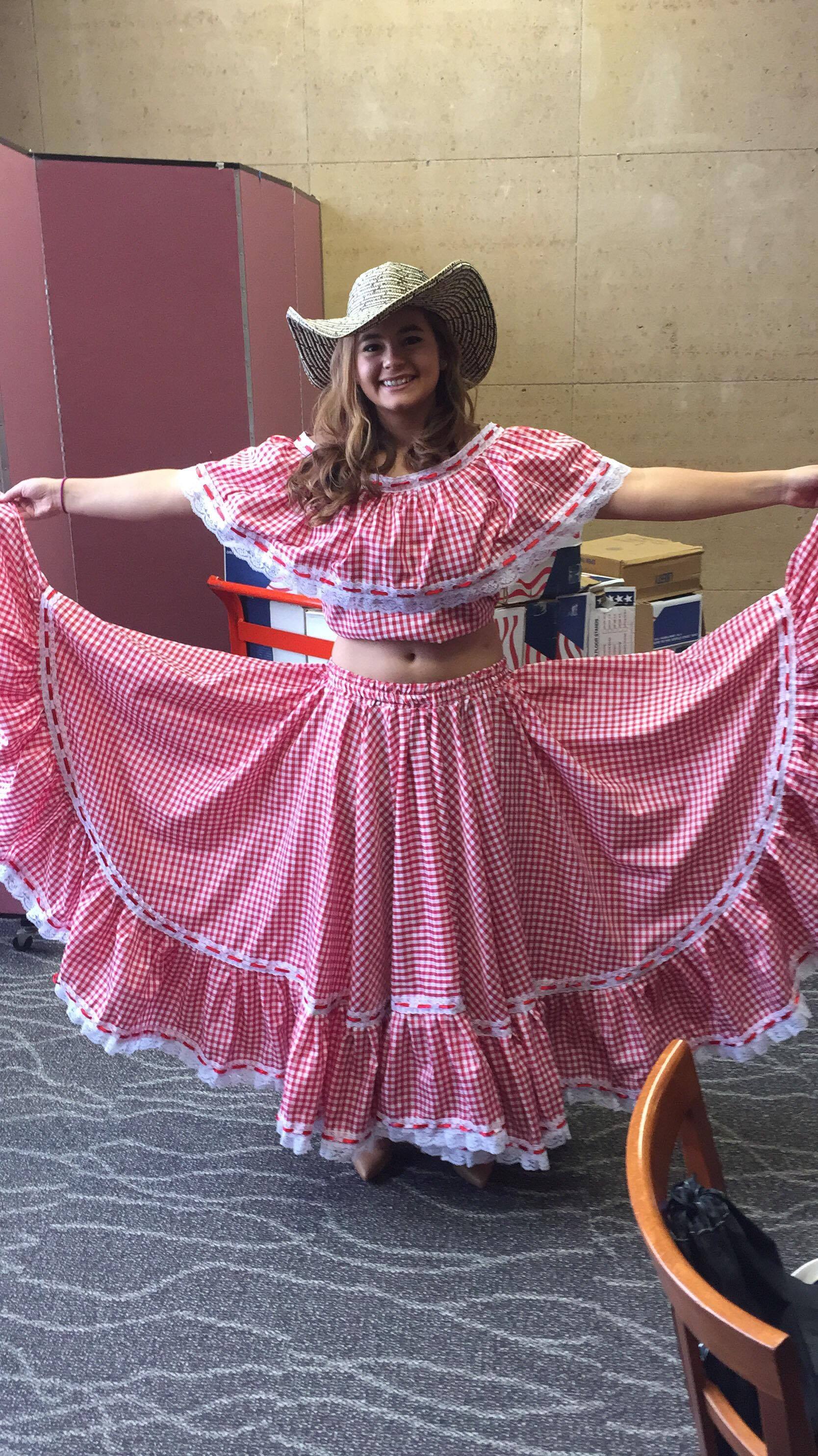Food strengthens cultural identity for international student
Maria Gomez walks into the Multicultural Center with a Colombian badge pinned to her backpack. She carries a plastic container full of arepas with chopped vegetables and meat to top them off as a snack for staff in the Office of Diversity and Inclusion (ODI). It’s not very often for Gomez to make a home-cooked Colombian dish, but when she does, she is more than happy to share her cultural foods.
“The other day, I brought some for the ODI advisors,” Gomez said. “Because when I make food, I make a lot.”
At 16, Gomez graduated high school and moved to the Duluth from Bogota, Colombia to study Cellular Molecular Biology and Communications at University of Minnesota Duluth.
“I was a baby,” Gomez said. “You know that you’re really young, and you’re going to be by yourself in a new country.”
Now, at 20, Gomez is currently an intern for the International Student Services and a familiar face in the Multicultural Center. She lives with her two cousins in Duluth and she will be graduating with a Bachelor of Science in May 2018.
During holidays, such as Christmas, Gomez’s food experience changed since she left Colombia.
“The hardest moments when I felt really homesick is when I stayed here for Christmas during my Freshman year,” she said. “Because Christmas in Colombia is this huge celebration with, not only your close family, but everyone in your family, your neighbors.”
Gomez misses eating Colombian traditional dishes such as arepas and bunuelos, a Colombian fried cheese ball, during the holidays. She doesn’t cook or eat Colombian food often because it is difficult for her to find specific ingredients for the foods locally.
According to ISS coordinator Emily Drevlow, the difficulty of finding ingredients for ethnic foods varies. She is frequently asked by students where to get certain ingredients.
“If they’re coming from Europe, it’s a little bit easier,” Drevlow said. “But if they’re coming from some Asian countries, some African countries, it’s a lot harder to find ingredients that would be more common at home.”
Marie enjoys cooking traditional Colombian dishes as it is a way for her to feel directly connected with her Colombian heritage miles away from home. Food has brought her a sense of family and belonging.
“When I cook traditional Colombian food, it takes me the whole day,” Gomez said. “I usually use this as a relaxing time, so I play Latin music. I grab the arepa flour and mix it with water. It becomes a family thing. My cousins come home and help, and we all make it together.”
Dinner invitations are common for Gomez’s friends. She invites her friends to her apartment for lunch or goes to her friends’ apartment and insists on cooking Colombian food for them. Gomez says that the easiest way for her to bond with people is by sharing food with others. Elizabeth Frandle is one on the invitation list.
“It’s just a way to share your culture and bring people together through food,” Gomez said.
Frandle is a fellow senior and a close friend of Gomez. Gomez and Frandle initially connected through their love in cultural dance and their interest in talking about different cultures. Gomez shared her experiences in Colombia with Frandle.
Frandle said her first experience with Colombian food was with Gomez.
“I didn’t even know anyone that I personally met that was Colombian,” Frandle said. “I remember she would always talk about her culture food, and it would be in comparison to American food because I would always say ‘gosh, the food here sucks!’”
Gomez has cooked several dishes for Frandle for the past four years of their friendship from arepas, bunuelos, and empanadas.
“They use a ton of cheese!” Frandle said. “When I first had Colombian food, it was absolutely amazing. A lot of cheese. A lot of fried food. She made me a lot of street food, and to me that’s the most cultural food you’re going to get.”
Gomez has taught Frandle some traditional Colombian recipes such as how to fry plantains for the desired flavor—sweet or salty.
Gomez wears her Colombian pride on her sleeve, or in her case, her backpack.
“I feel really proud when I have the opportunity to showcase it as much as I can,” Gomez said.
Despite her prideful attitude towards her heritage, growing up, Gomez struggled with her Colombian identity.
“I was not proud of being Colombian, and when I came here, I thought ‘I don’t want people to know I’m Colombian—I don’t want people to know I am an international student,’” Gomez said. “In my head, for some reason that was not cool.”
During her time in the United States and away from Colombia, Gomez has learned to accept her heritage from talking to other people about her past experiences, building connections, and yearning for arepa flour.
“I love my Colombian culture, and I wouldn’t change it for anything,” she said. “I feel really proud when I have the opportunity to showcase it, and show the beauty of it. There are so many misconceptions about Colombia as a country and a culture, and I feel like it’s my job to show them that we’re not different from the US.”





